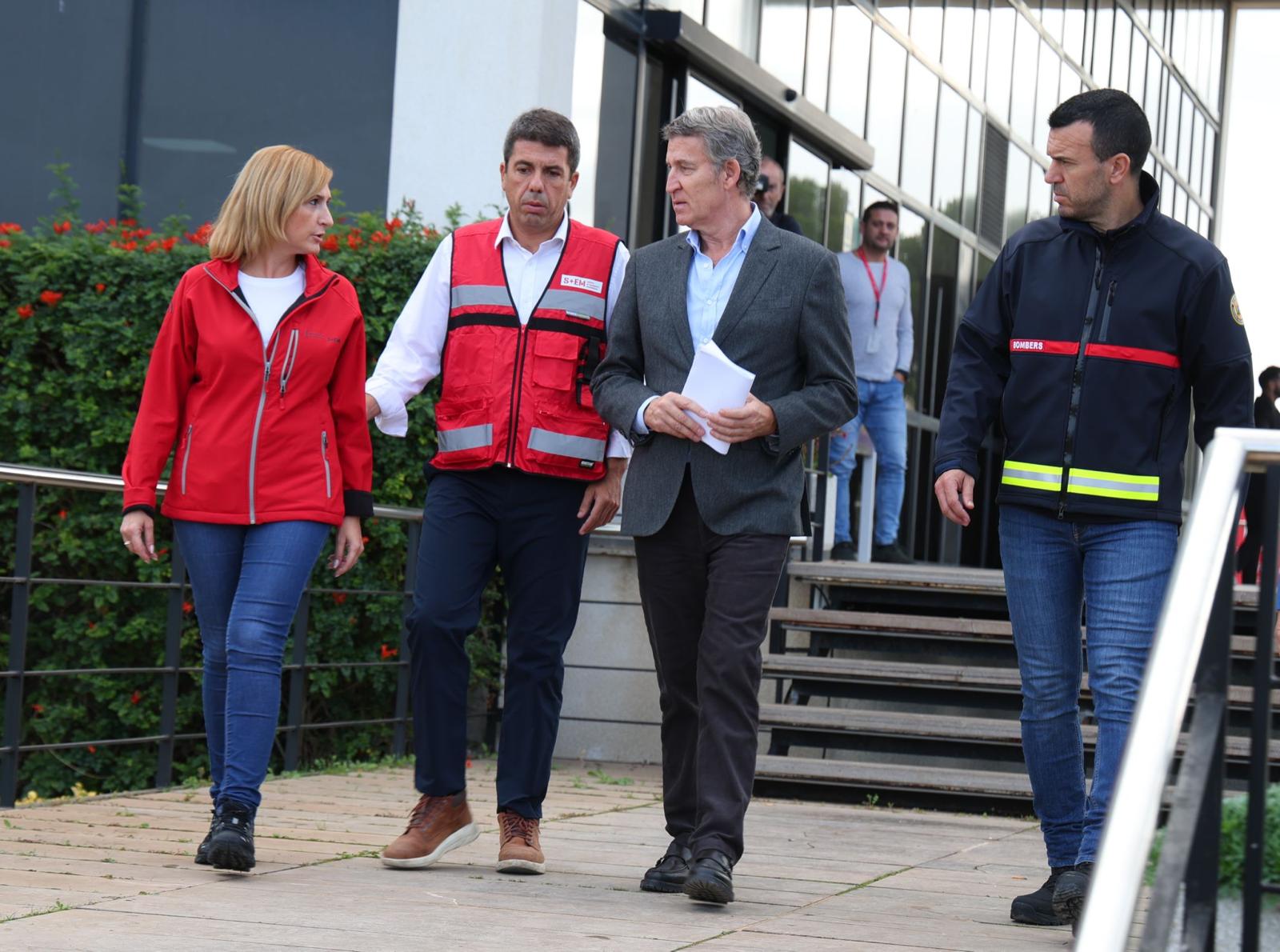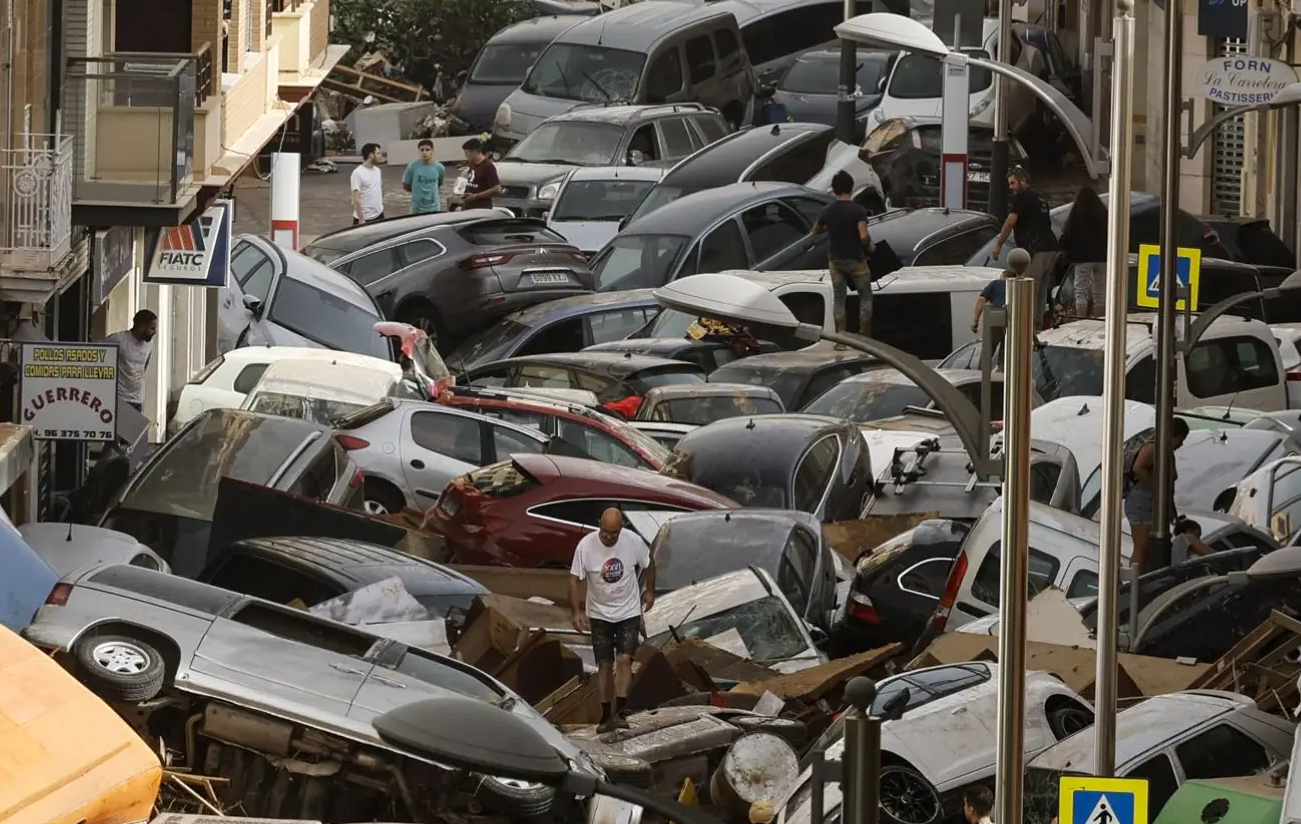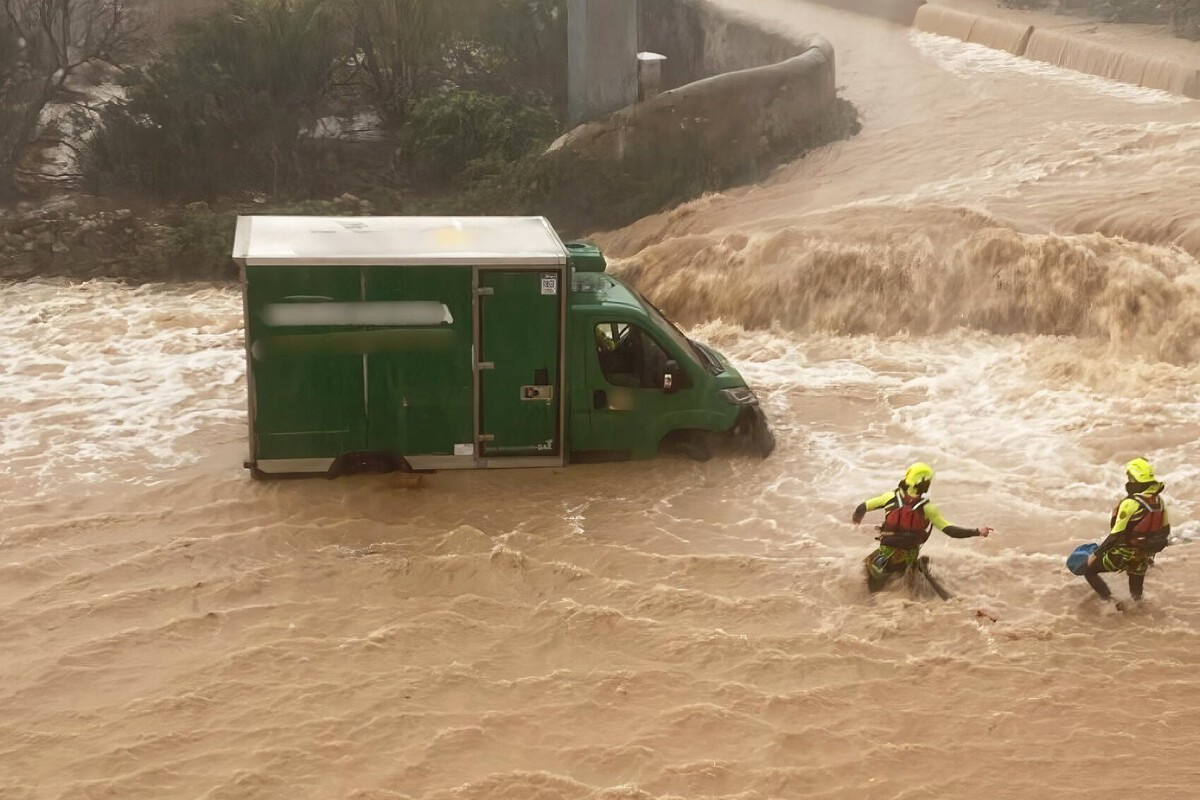
It would be too naive to think that in Valencia there are empty weather factors behind the dead and the damage caused by the storm. Many have denounced the management of the emergency by the Generalitat and that the business thirst of the multinationals has prevailed. And we can also see that there's an exclusionary urbanism that has affected the poorest areas, with maps placed next to each other.

Agency Aemet has described as "historic" the October 29 storm in Valencia, the largest cold drop recorded in a century in the Spanish state. But that doesn't explain anything that happened. Apart from other reasons related to the loosening of the climate and the human hand, many criticize the negligence of the Generalitat Valenciana in the face of the emergency.
The Júcar Hydrographic Confederation also sounded the alarm at noon, but the government of Carlos Mazón was delayed almost eight hours to activate the warning and alert the population. It was late
On that day, the weather agency had issued a red warning since the first hour of the morning, the Júcar Hydrographic Confederation had also given the alarm at noon, but it took almost eight hours to activate the warning to the government of Carlos Mazón del pp. It was late. Moreover, Mazón himself in the early afternoon, when the worst of the storm was yet to come, said that the situation was “stabilized” and that the worst had happened. The President of the Valencian Community has denied this error on social networks by the Valencian Government.
"Criminal climate negationism"
It is clear that the Valencian pp has left behind in terms of measures to deal with the climate emergency. One of the first things Mazón did when he came to power with the support of Vox was the closure of the Valencia Emergency Unit, saying it was a “chiringuito”. “Criminal climate negationism,” is called by Context magazine in its editorial.

On the other hand, the lack of more predictive means and a clear protocol has aggravated the disaster: “If we had known 24 hours in advance what the critical areas of Valencia would be, surely the warning would be activated sooner,” said La Vanguardia a member of Meteored. The message previously circulated by a farmer who claimed that Aemet's radar in Valencia was not working has become viral on the networks. Then the agency has denied him.
In Valencia “rain does not know how to rain”, Núria Cadenés recalled in his chronicle in Vilaweb, as a well-known song from those territories points out. In this medium they explain what happened in Paiporta (more than 40 deaths): when the storm of the Xiva river that divides the town arrived, there was no rain: “No one told them about the arrival of hell to the people.” And that is the responsibility of the authorities.

Thank you Mercadona
On this occasion we have seen that negationism and negotiation can be synonymous. Without warning, people were sent to work in the afternoon as well. To produce. In the networks we have known the testimonies of workers from multinationals such as Mercadona, Ikea and others who did not close doors: “We have made our lives to sell four things,” one of them said. Meanwhile, the mayor of Valencia (pp) thanked Mercadona for the distribution of food to those affected by the fire.

And there are those who say that all this would be much worse if Franco had not diverted the Turia River basin. A number of right-wing media have pointed out that the works carried out after the Great Riuada of 1957 have saved the city from the waters. But the maps do not show it, as Turia has been above all the south of the “new” that has been absorbed by water.
In this southern periphery, polygons and highways have been built for decades between peoples and agricultural lands. But poor maintenance work has been done, such as that of the Xiva regatta, which receives a lot of pollution and dirt.
Polygons and marginalization in the southern periphery
In this southern periphery, polygons and highways have been built for decades between peoples and agricultural lands. But the maintenance work has been limited, such as that of the Xiva regatta, which receives a lot of pollution and dirt, as Vilaweb explains.
Paiporta, Alfafar, Aldaia, Torrent... are some of the villages in the area. The ones most affected by the storm, the ones that have had the most deaths. And if we put two maps together, let's say, on one side of the southern part of the Turia Canal, captured by the floods, and on the other side of the neighborhood's per capita income per neighborhood, we'll realize that it's too foolish to think that all this happened is just the fate of a "historic" storm.
